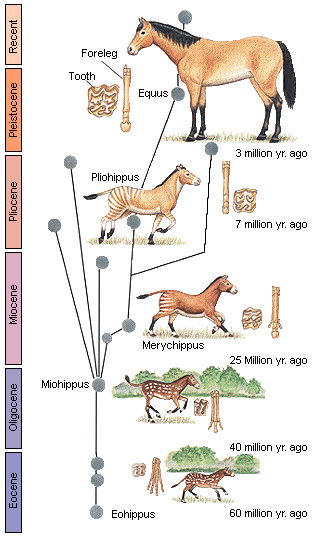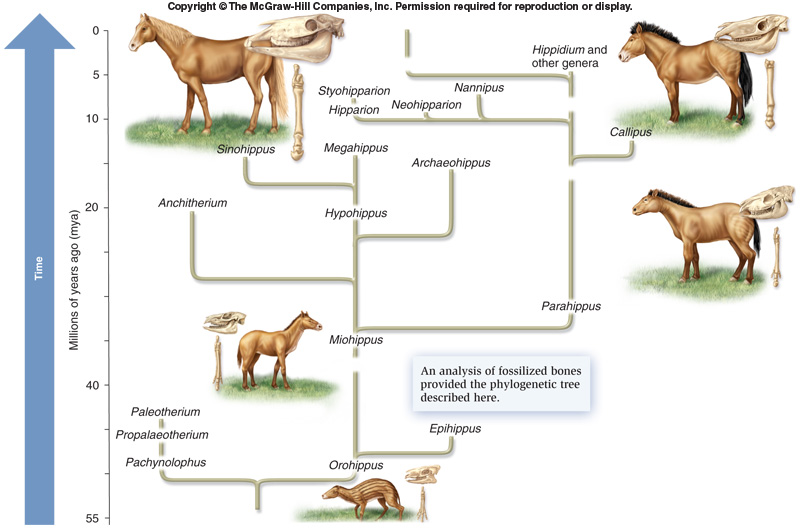 Evolution
EvolutionA horse is a hoofed mammal that is believed to have evolved from being a small multi-toed creature to a large single-toed animal over the past 45 to 55 million years. Regardless of breed, management and environment, a domestic horse is expected to live up 25 to 30 years. Simply by looking at its teeth, the horse’s age can be roughly estimated.
The word Foal can refer to both a male or female horse that is less than a year old. When they reach the age between one and two years old they are called Yearling. Colt and Filly are male and female horse, respectively which are under four years of age. A female horse four years and older are called mare while non-castrated horses of the same age are called stallion. Gelding is used to refer to a castrated horse of any age.
A horse’ height is measured at the highest point of the wither, where the neck meets the back as it is the stable point of the anatomy. This measurement is in terms of hands, abbreviated ‘h’ or ‘hh’ or hands high. One hand is equivalent to 101.6 millimeters. Size varies to a great extent as per breed of horses but it could also be affected by nutrition. In 1848, a Shire horse named Mammoth was born and recorded to be the largest horse in history, stood at 21.5 hh and weighed 1, 500 kg. While the smallest horse (as a result of dwarfism) is a mature miniature horse named Thumbelina with a height of 17 inches and weight of 27 kg. A pony is ahorse whose height at maturity is 14.2 h. But aside from the height, the appearance and temperament make a distinction between a pony and a horse. Ponies often have thicker manes, tails and coat. Their legs are proportionally shorter, with wider barrels, heavier bones, shorter and thicker necks, short heads and broad foreheads. They have calmer temperaments and have a higher level of equine intelligence than horses.

Horses also display a sundry assortment of coat colors and unique markings. More often than not, horses are first classified according to their coat color prior to breed or sex.
In Horse Breeding, gestation is from 335-340 days. One foal is usually given birth at a time, incidents of twins are quite rare. At about 18 months, horses may be physically capable of reproduction. The mature age is at four years but the skeleton continues to develop until the sixth year. As in riding competitions, the horse’s stamina are allowed to mature and develop until they reach a full 60 calendar months (5 years). A Horse skeleton has 205 bones on average. Its hoof continues to grow and requires trimming every five to eight weeks. Horses are herbivores and their teeth make them modified for grazing with the 12 incisors to bite off the grass and the 24 teeth for chewing.
Horses’ senses are considerably superior than human’s, are almost always aware of their surroundings, being prey animals. They have the largest set of eyes among all land mammals. They can sleep either by lying down or standing up. Studies have shown that horses do extremely well at simple learning and may be able to solve advanced cognitive challenges with categorization and concept learning.


No comments:
Post a Comment